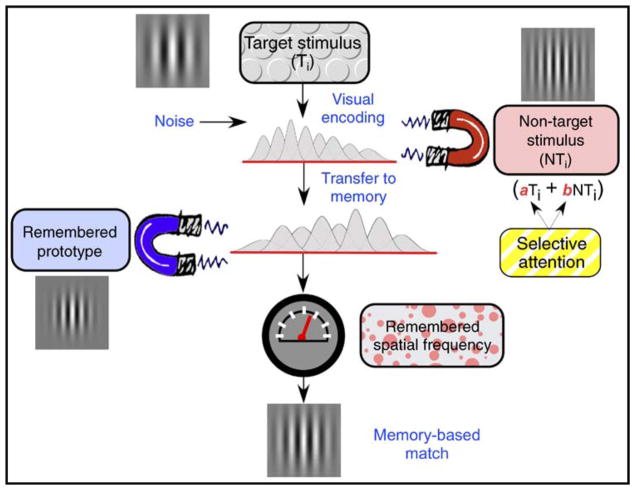Figure 11.
Graphical summary of processes that may be implicated in the present study’s results. On the ith trial, the spatial frequency of the Target stimulus (Ti) is encoded by an ensemble of frequency-tuned mechanisms. The spatial frequency of the Non-Target stimulus (NTi) acts as an attractor on this representation of Ti. In this process, selective attention can bias the relative influences of Target (a) and of Non-Target (b) stimuli. After being transferred to memory, the resulting representation is attracted toward the remembered prototypical stimulus. The outcome of this attraction is read out (indicated by the meter) and directs the subject’s reproduction of Ti ‘s spatial frequency (the memory-based match). Note that the two classes of attractors are shown as influencing distinct stages of processing. As the diagram suggests, our working hypothesis is that (1) the Non-Target effect operates in early visual processing, whereas (2) the Prototype effect operates on the Target stimulus’ memory representation.

